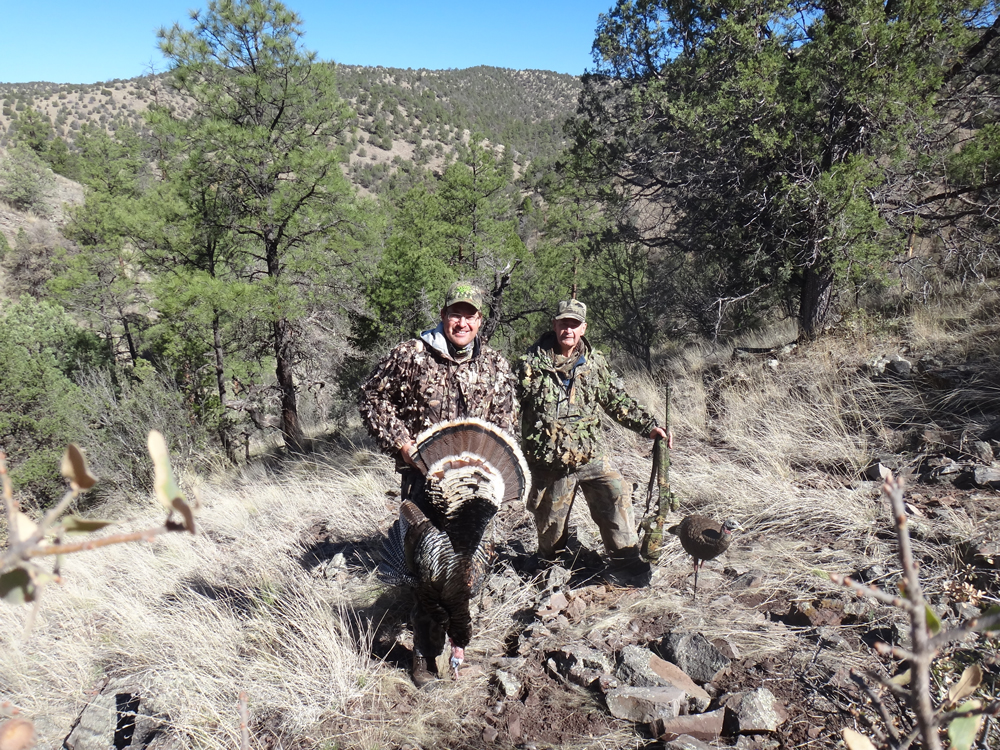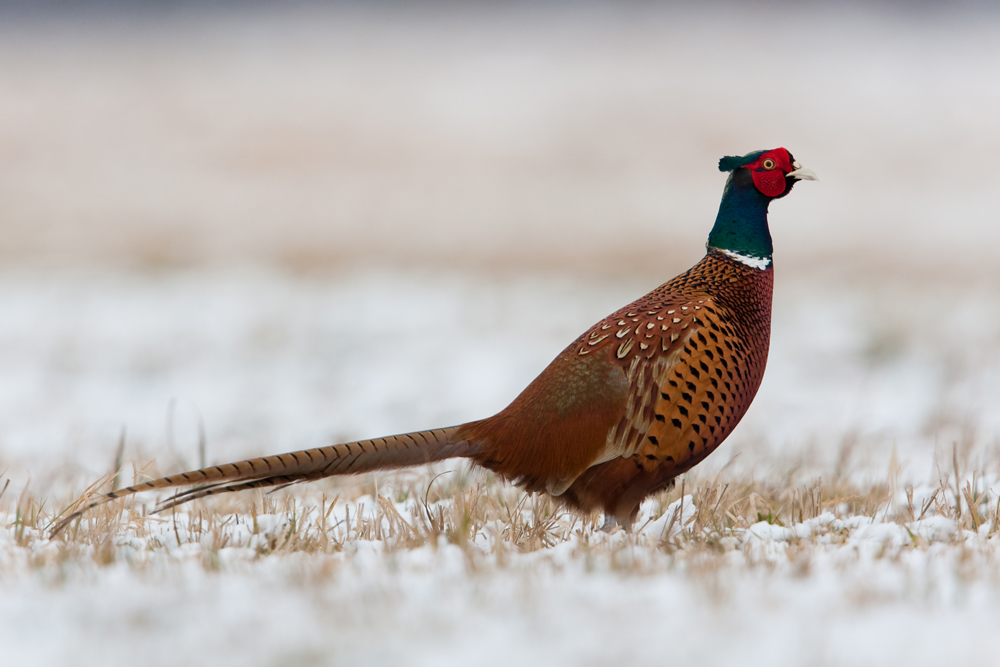Spring: It’s the most wonderful time of the year in New Mexico. The woods are alive with sights and sounds, none greater than the courtship display of wild turkeys. New Mexico is graced with three of the six subspecies of the wily bird—Rio Grande, Merriam’s, and Gould’s—from Raton to Rodeo. More than 14,000 hunters will go afield before the turkey hunting season is over in May to try and fool a strutting tom into shotgun or bow range.
For the uninitiated, it’s more difficult than it appears to outwit a wild turkey. And in the coming days you can count me among those who will be sitting in the ponderosa forest, stock-still on a cold morning, yelping and cutting with a box call at daybreak, hoping to hear back that signature sound that speaks to turkeys being nearby. Turkey hunting requires alertness and awareness—a Zen-like living in the moment—like no other endeavor.
Luckily for me, I have the privilege to be in the woods this spring once again with my aging father and my teenage son. With my boy, I will do what my dad has done with me going on 45-plus years. It has become a ritual with my family and many others alike.
But were it not for conservation, that ritual may have never come to be. There was a time when wild turkeys faced extirpation from unregulated market-commodity harvest and ruined habitats. The woods were hushed in April.
The tide turned 80 years ago with the passage of the Wildlife Restoration Act of 1937—commonly called the Pittman-Robertson Act, named for the authors of the federal legislation. It was an ingenious law.
Few are the folks who actually enjoy paying more in taxes, but you can count hunters among those who do. The Wildlife Restoration Act was supported by organized sportsmen and women, state fish and game agencies, and industry to tax firearms and ammunition, with the protected proceeds going specifically to wildlife conservation.
The outcome has been nothing short of remarkable—the state agencies have for 80 years been assured of a reliable, steady stream of funding based on license sales and the purchase of hunting gear. It’s no coincidence that the New Mexico Department of Game and Fish began trapping and relocating wild turkeys two years into the new law, in 1939, to ensure the expanding population was comprised of genetically robust animals.
In 1940, the agency bought a reach of the Rio Cebolla in the Jemez Mountains for waterfowl conservation, today’s Fenton Lake State Park. That was followed by the purchase of an eight-mile reach of the Cimarron River, adjacent uplands, and many other wildlife management areas across the state, including large tracts of short-grass prairie—prime lesser prairie-chicken habitats.
The law funded scientific wildlife research, habitat management, and restocking of wildlife. The agency was the first in the country to capture and relocate pronghorn at a time when the population was an anemic 2,400 animals. All this was facilitated by a tax on sporting arms.
In 1950, the Sport Fish Restoration Act was added to the mix to do for fish what the former law did for wildlife. In eight decade’s time, $19 billion has been returned to the states for conservation. This year, $21.5 million is available to the New Mexico Department of Game and Fish for conservation work, paid for by hunters and anglers.
When you buy that new turkey gun, arrows or a new bow, a box of shotgun shells, or fishing tackle, you should know that you are making an investment in conservation’s cycle of success. As much as 11 percent of your purchase will be divvied to the state fish and game agencies and returned to you in the form of science-based wildlife and fisheries conservation; you’ll help pay the salary of a game warden; you will buy fuel for aircraft that carries wildlife biologists who conduct aerial big-game or waterfowl surveys to inform future decisions. Your money will feed Rio Grande cutthroat trout destined to be restored to a high mountain stream.
In New Mexico, more than 200,000 people annually buy hunting and fishing licenses. This supports over 7,900 jobs contributing more than $800 million in spending and labor, while putting another $106.5 million back into the public coffers as income and sales-tax revenue. Certainly, hunting and fishing is an economic boon for New Mexico.
But the greatest dividends have immeasurable value: the splendor of watching the first light of day awaken the woods; the sound of a talking tom filling the air from the ridge above me while I sit next to those who I love the most. That’s something that I will never grow tired of.
Cliff Schleusner is the Chief of the U.S. Fish and Wildlife Service – Southwest Region’s Wildlife and Sport Fish Restoration Program. He oversees the program in Arizona, Oklahoma, Texas, and New Mexico, where he lives. For more information on the program, visit fws.gov/southwest.
 THE LITERATURE OF TURKEY HUNTING: AN ANNOTATED BIBLIOGRAPHY
THE LITERATURE OF TURKEY HUNTING: AN ANNOTATED BIBLIOGRAPHY
A critical reference source, including prices, for anyone interested in books, pamphlets, brochures and published ephemera on turkey hunting.




